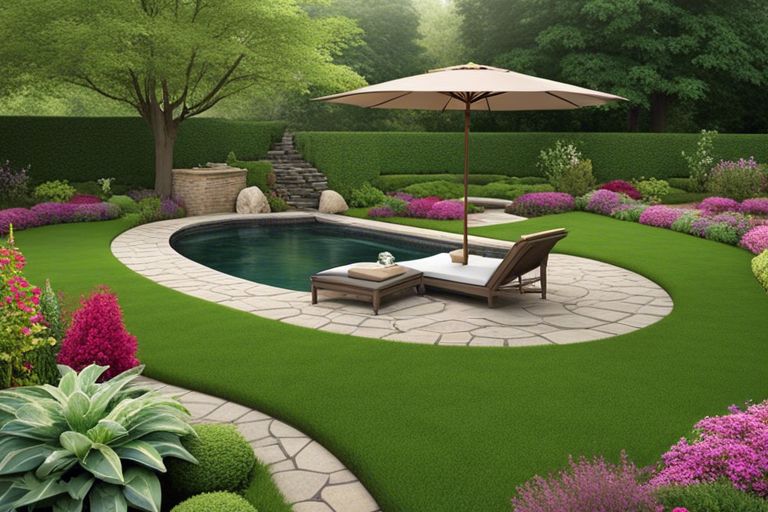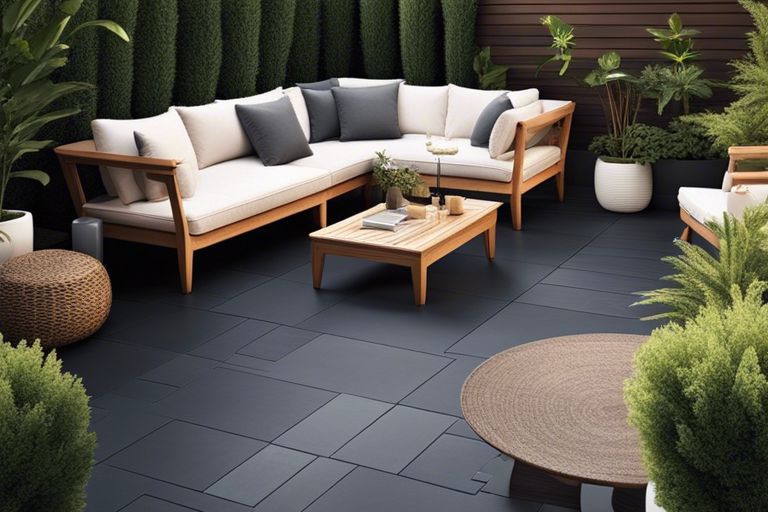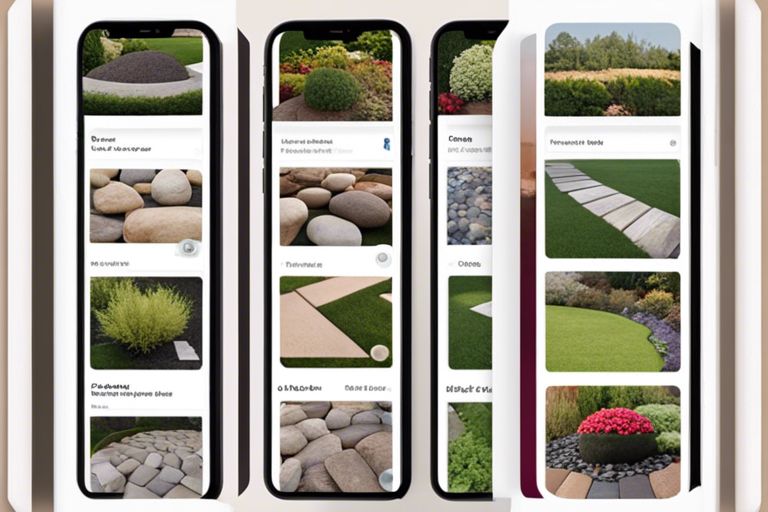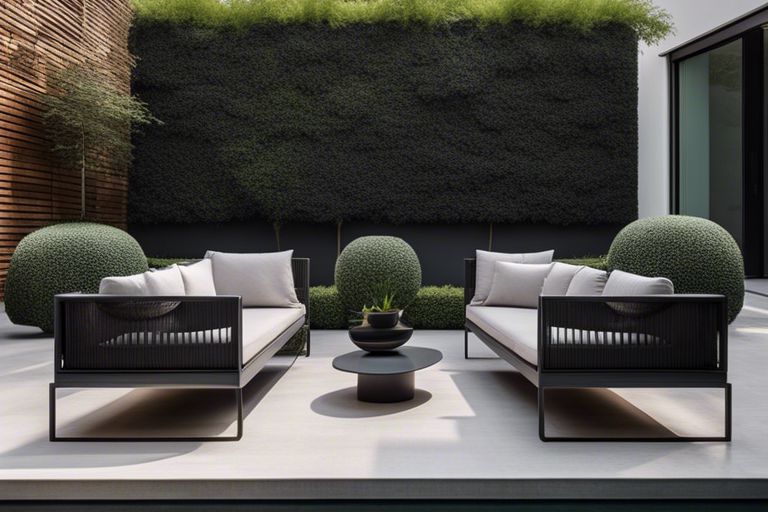Just imagine transforming your outdoor space into a stunning oasis using landscape stones that enhance both beauty and functionality. In this guide, you will discover step-by-step tips to create captivating stone arrangements that reflect your personal style while ensuring durability and practicality. From selecting the right stones to positioning them for maximum impact, these strategies will empower you to design like a seasoned pro. Get ready to elevate your landscape with confidence and flair!
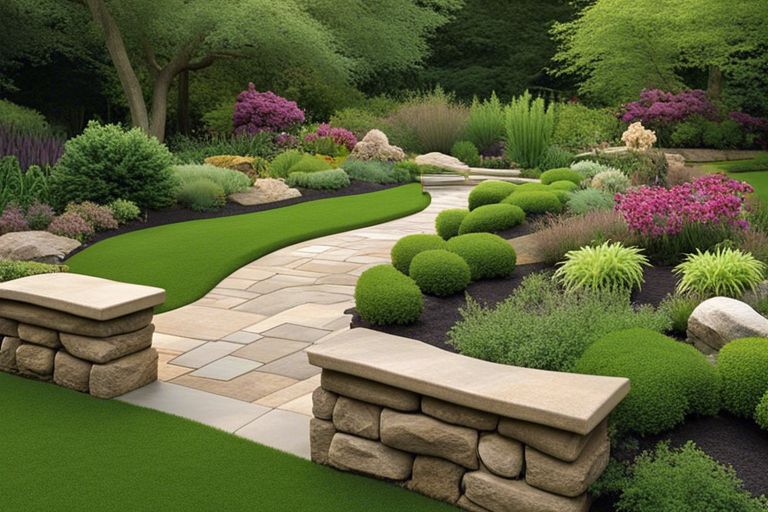
Key Takeaways:
- Choose the Right Size: Selecting landscape stones in appropriate sizes ensures better integration and visual appeal within your space.
- Consider Color and Texture: Harmonizing colors and textures with existing landscaping elements enhances the overall aesthetic of your project.
- Plan Your Layout: Sketching a design layout helps visualize the arrangement of landscape stones, leading to a more professional finish in the final look.
Preparing the Site
Your success in designing with landscape stones lies not only in your artistic vision but also in a well-prepared site. Taking the time to assess the terrain, clear the area, and mark the boundaries will set the foundation for a stunning and functional landscape. An organized preparation process allows you to visualize your design more effectively and ensures that your landscape stones are supported properly for long-term durability.
Assessing the Terrain
Site assessment is a critical first step in your landscape project. Start by evaluating the natural topography of your yard or garden. Look for slopes, levels, or any uneven areas that might require further attention. Pay attention to factors such as sunlight exposure, drainage patterns, and existing vegetation. Understanding these elements not only influences the design but can also help you determine the type of rocks to use and where to place them to achieve a harmonious and balanced look.
Additionally, consider how the landscape stones will interact with your home and any existing structures. Taking notes and sketches during this phase can be invaluable as you visualize your space and make decisions on the best placement for each stone element. A well-planned layout is key to enhancing both your home’s aesthetics and functionality.
Clearing the Area
One of the most imperative steps in preparing your site is clearing the area where you plan to work. This involves removing any grass, weeds, or debris that could interfere with your design. Use a shovel or a hoe to break up the soil and clear away the unwanted vegetation. Remember that a clean slate helps your landscape stones to stand out and allows for better soil preparation underneath.
Preparing your site by eliminating weeds and debris will not only improve the visual appeal but also minimize the risk of plant growth encroaching on your design later. Be sure to consider disposal methods for the cleared materials; composting organic matter can add a sustainable touch, while stones and gravel can often be repurposed in another area of your landscape.
Marking the Boundaries
With your site cleared, it’s time to define the layout through proper boundary marking. You can use stakes and string or environmentally friendly spray paint to outline the areas where your landscape stones will be placed. This visual guide will help you stay organized and ensure that you remain within the intended design parameters. It’s critical to take your time with this step, as it can save you from making costly errors down the line.
Establishing clear boundaries also allows you to visualize scale and alignment better, ensuring each stone’s placement achieves the desired effect. Marking out your design can also help you identify how much stone you will need and where additional landscape features may be added for enhanced aesthetics.
Choosing the Right Stones
The process of selecting the right stones for your landscape design is vital in achieving a professional look that reflects your personal style. By understanding the various options available and how each type can enhance your outdoor space, you can make informed choices that elevate your design. Fortunately, narrowing down your options can be done efficiently by categorizing them into clearly defined types.
Types of Landscape Stones
One of the first steps in choosing stones is to familiarize yourself with the different types available. Each type of stone comes with its unique characteristics and can serve various purposes in your landscape. Here’s a succinct overview of some common landscape stone categories:
| Type of Stone | Description |
| Granite | Durable and available in multiple colors, great for pathways. |
| River Rock | Smooth stones that provide a natural look, ideal for water features. |
| Slate | A flat and versatile stone used for patios and walkways. |
| Natural Boulders | Large stones that make a bold statement in gardens. |
| Flagstone | Flat pieces used to create a rustic walking surface. |
Knowing the strengths and uses of each type can help you choose stones that not only fit your aesthetic desires but also function well in your specific landscape design. Make your selections thoughtfully, considering the overall style you want to achieve.
Color and Texture Considerations
Considerations surrounding color and texture are fundamental when selecting landscape stones. These elements will contribute to the overall atmosphere of your outdoor space. Warm hues might evoke a cozy, inviting landscape, while cooler tones tend to create a tranquil environment. Always consider how the stones interact with existing plants and features to ensure a harmonious integration into your space.
Landscape stones can vary greatly in texture, from smooth river rocks to rugged boulders. Mixing different textures can add depth to your design, but remember that overwhelming your space with too many variations can detract from its beauty. Aim for a balance that enhances your garden’s visual appeal while serving your practical needs.
Budget-Friendly Options
Stones don’t have to break the bank. Utilizing budget-friendly options can still yield stunning results in your landscape design. Seek out local suppliers or community resources that offer discounted or reclaimed stones. Furthermore, you might consider incorporating gravel or recycled materials into your design, as these can provide texture and contrast without a hefty price tag.
Your budget does not have to compromise your vision. By exploring local suppliers, considering natural alternatives, or even testing your hand at DIY projects with stones, you can maintain both your financial health and aesthetic integrity. Each thoughtful decision brings you closer to achieving a beautiful landscape that reflects your style.
Types of stones offer diverse aesthetics and functionalities, enabling you to curate an appealing outdoor environment while adhering to cost-effective strategies. Your selection of stones should resonate with your personal style, creating a space that feels uniquely yours.
Designing Your Layout
Many homeowners find that designing their landscape with stones not only enhances the beauty of their outdoor spaces but also allows for personal expression and creativity. To start off on the right foot, you first need to visualize your overall layout. Consider how the placement of stones can define areas within your landscape, such as pathways, garden beds, or seating areas. Sketching out a rough plan can help you see how the elements will interact vis-à-vis existing features in your garden.
Creating a Focal Point
Layout and design are most effective when they highlight a central feature that draws the eye. This focal point can be achieved by using larger stones, or even creating a small stone sculpture or a decorative feature. The beauty of landscape stones lies in their inherent qualities; for instance, a well-placed boulder can suggest a sense of history and permanence in your garden. Bear in mind, your focal point should complement your overall design and integrate harmoniously with the surrounding elements.
Balancing Elements
The key to a visually pleasing layout is balance. You want to ensure that no single area dominates the space, thereby creating a harmonious environment. This can be achieved by using stones of varying sizes and colors, interspersed evenly throughout the design. Consider the proportions of your stones relative to your plants and other features. A well-balanced landscape not only pleases the eye but also creates a sense of flow throughout your garden.
Elements of balance can be achieved by mirroring shapes or colors in different areas of your layout. For example, if you have a large, dark stone on one side, balancing it with another stone of similar hue or size on the opposite side can create visual symmetry. Don’t be afraid to experiment with this principle until you find a balance that resonates with your aesthetic and feels satisfying to the eye.
Considering Drainage and Erosion
Designing your landscape with a keen awareness of water flow can make all the difference in longevity and functionality. When laying down stones, always consider how rainwater will impact your space. Strategic placement can help guard against erosion, ensuring that your beautiful stones remain in place. Focus on creating small slopes or terraces, which can help divert water away from vulnerable areas, ultimately protecting your hard work.
With a bit of planning, you can ensure that your stone features not only enhance the visual appeal of your garden but also maintain its integrity over time. Pay attention to the direction of water flow, and consider incorporating plants that thrive in damp conditions where necessary. By being proactive about drainage issues, you will create a resilient landscape that can withstand the elements while looking stunning all year round.
Laying the Stones
Now that you have gathered all your materials and selected the right landscape stones for your project, it’s time to examine the exciting phase of laying the stones. This step is crucial in achieving a beautiful and functional design that will enhance your outdoor space. As you begin, consider how to personalize homemade stepping stones for your garden to add a unique touch to your design.
Starting with a Base Layer
One of the first things you should do is to create a solid base layer. This layer serves as your foundation, ensuring stability and durability for your landscape stones. Start by clearing the area of any debris, rocks, or grass. Next, excavate to a depth of about 3-4 inches to accommodate your base material, typically composed of landscape fabric, gravel, or sand. The importance of having a well-prepared base cannot be overstated, as it will prevent shifting and sinking of the stones over time.
Once the area is excavated, lay down your landscape fabric to help with drainage and weed prevention. Follow this by adding a layer of gravel or sand, which should be leveled out evenly. This base will provide the necessary support for your stones and allow for proper drainage. Remember to compact this layer, ensuring it is firm before you begin placing your stones.
Installing Edging and Borders
Installing the edging and borders is another important step that adds structure and definition to your design. Installing these elements helps to keep the stones in place while providing a clean transition between different sections of your landscape. You can use materials such as pavers, bricks, or wood to create a perimeter that complements your stone layout. Choosing the right material for your borders can significantly enhance the overall aesthetic appeal of your landscape.
The next step is to carefully position your edging materials along the perimeter of your site. Make sure they are evenly aligned and at the same height as your planned stone path or feature to maintain a cohesive look. Use a rubber mallet to tap them into place and ensure that they remain secure and stable throughout the project.
Filling in with Decorative Stones
Filling in with decorative stones is the final flourish that will bring life to your design. Filling is an opportunity for creativity, allowing you to incorporate a range of colors and shapes that can enhance the beauty of your landscape. Begin by placing your chosen decorative stones in the gaps between the larger stones, ensuring they are distributed evenly to create an appealing visual balance. You may opt for pebbles, crushed granite, or colored glass stones to add texture and interest.
Base your selection of decorative stones not only on aesthetics but also on functionality. Using smaller stones or gravel can help with drainage, making your design not only visually pleasing but also practical for your garden’s health. Balance the size and color of your fill materials with the larger stones to achieve an overall harmonious look in your outdoor space.
Adding Finishing Touches
Keep in mind that the finishing touches are crucial in elevating your landscape design from ordinary to extraordinary. It’s the final details that bring your vision to life and ensure that your outdoor space feels cohesive and welcoming. By incorporating plants, lighting, and decorative elements, you can significantly enhance the aesthetic appeal of your design while creating a functional and inviting atmosphere.
Incorporating Plants and Greenery
On your journey to achieving a polished landscape design, consider the strategic placement of plants and greenery. Choose plants that complement your stonework and suit the climate in your area. For example, if you have a stone pathway, opt for low-maintenance ground cover plants that can thrive in the environment. Vary the heights and textures of your greenery to create visual interest; tall grasses or ornate shrubs can act as eye-catching focal points against the stone backdrop.
Additionally, think about seasonal color and fragrance. Incorporating perennial flowers provides a pop of color through various seasons, while fragrant herbs or flowering shrubs can enhance the sensory experience of your garden. Don’t forget to consider the overall color palette that aligns with your stone style, ensuring that every element works harmoniously together.
Installing Lighting and Irrigation
The addition of lighting can dramatically change the ambiance of your outdoor space, making it not only functional but also enchanting under the stars. Consider using a mix of ambient, task, and decorative lighting to highlight your landscape stones, paths, and any focal points such as trees or sculptures. For instance, soft, warm lights can create a cozy atmosphere, while spotlights can draw attention to specific features.
Incorporating an efficient irrigation system is paramount for keeping your plants healthy and vibrant. By choosing a low-maintenance setup such as a drip irrigation system or adding rain sensors, you can ensure your garden receives the necessary hydration without drowning your stone features in excess water. Effective irrigation will keep your plants thriving while protecting your stone features from moisture damage.
A well-planned irrigation system not only simplifies maintenance but also promotes sustainability. By tracking water usage and ensuring adequate coverage, you can cultivate a beautiful landscape while being mindful of environmental impact. Strongly consider layering your lighting to create depth—up-lighting trees or down-lighting pathways can transform your outdoor sanctuary into a breathtaking retreat.
Adding Decorative Elements
Touches of personality can elevate your landscape design significantly. Incorporating decorative elements such as garden sculptures, ornamental pots, or unique furniture pieces can create a narrative in your garden, reflecting your style and enhancing the overall aesthetic. Ensure these elements harmonize with your stone features, creating a unified look that feels curated and intentional.
Additionally, don’t overlook the potential of water features like fountains or ponds. They not only provide a sensory experience but also create a serene focal point, enriching your landscape. Integrating these details can guide the eye and spark conversation among friends and family, turning your garden into a vibrant hub of activity.
It is necessary to remember that while decorative elements enhance beauty, their placement should never overpower or clash with the existing structure of your stonework. Take your time in selecting pieces that speak to your aesthetic sensibilities, laying them out to see how they interact with both your plants and stone features.
Maintenance and Upkeep
After investing time and resources into your landscape stone design, it’s imperative to maintain your beautiful outdoor space to ensure it remains visually appealing and functional. Regular upkeep not only prolongs the life of your stones but also allows you to enjoy a vibrant, well-kept environment. To achieve this, establishing a routine will help keep your landscape looking pristine and in harmony with nature.
Regular Cleaning and Weeding
To keep your landscape stones in excellent condition, you should incorporate a regular cleaning schedule. Start by gently sweeping away debris, such as leaves and dirt, which can accumulate over time. You may also want to use a hose or pressure washer for tougher stains, but ensure that you use a moderate setting to avoid damaging the stones. For those stubborn stains, a mild soap solution will often do the trick. Just remember to rinse thoroughly to prevent any lingering residue.
To maintain the beauty of your stones, it’s crucial to address any weeds that attempt to take root in your landscape. Regularly inspecting your stone pathways and beds helps you catch these intruders early. Hand-pulling weeds or using a hoe can be an effective way to keep your space tidy. Always take care to dispose of them properly to prevent them from reseeding in your garden.
Dealing with Weeds and Pests
One imperative aspect of maintenance is dealing with unwanted weeds and pests. To keep your landscape stone area flourishing, you must remain vigilant, as these nuisances can quickly disrupt the natural balance you’ve created. Utilizing a landscape fabric under your stones will help suppress weed growth, while applying an organic mulch can enhance both aesthetics and functionality by providing a barrier against weeds.
Weeds can accumulate rapidly, soaking up nutrients and water intended for your plants. Using natural herbicides or vinegar solutions can also be an effective means of controlling them without harming the environment. If pests become a concern, consider introducing beneficial insects that target these unwelcome guests. By maintaining a healthy ecosystem, you’ll ensure your landscape remains as beautiful as the day you designed it.
Seasonal Maintenance Tasks
For keeping your landscape stones in optimal condition, seasonal maintenance tasks are critical. It’s important to perform a thorough inspection of your stones each season, identifying any potential damage or wear caused by environmental factors. Seasonal cleaning should entail removing built-up debris, checking for cracks or loose stones, and addressing any chips or fading that may have occurred over time.
For a vibrant and inviting atmosphere, ensure that you also refresh the gravel or mulch layers around your landscape stones once or twice a year. This not only maintains aesthetics but also enhances drainage and prevents weed growth. Regularly attending to these seasonal tasks can rejuvenate your layout and keep it looking polished and inviting.
Maintenance is an ongoing journey that enhances your initial design. By dedicating a bit of time throughout the year to cleaning, weeding, and seasonal adjustments, you’ll reap the rewards of a stunning landscape that continues to bring joy and tranquility to your outdoor space.
Final Words
With these considerations in mind, you can launch on your journey to design with landscape stones like a true professional. Take the time to plan your layout meticulously, selecting stones that complement each other in size, shape, and color. You may find it beneficial to create a mood board, allowing you to visualize how each element will harmonize in your garden or outdoor space. Remember to incorporate texture and layering, as these details can add depth and visual interest to your project.
As you bring your vision to life, don’t hesitate to experiment and make adjustments along the way—design is an iterative process. Ensure that you are also mindful of placement, considering the natural flow of your space and how you want to guide guests through your creation. By approaching landscape stone design with creativity and care, you will enhance the beauty of your outdoor environment and create a lasting impression that reflects your personal style.
FAQ
Q: What types of landscape stones are best for designing a garden?
A: When designing a garden, it’s important to choose the right types of landscape stones that suit your aesthetic and functional needs. Some popular options include flagstone for pathways and patios, river rock for drainage and aesthetics, granite for retaining walls, and decorative gravel for ground cover. Each type of stone has unique characteristics; for example, flagstone offers a natural look and can be shaped to fit your space, whereas river rock adds a soft, rounded appearance that’s excellent for water features. Consider the overall design theme, durability, and local climate conditions when selecting your stones.
Q: How can I create visual interest with landscape stones in my yard?
A: To create visual interest with landscape stones, consider varying the size, shape, color, and texture of the stones you use. Incorporate different stone types, such as using larger boulders as focal points and smaller pebbles to fill in gaps and create pathways. Arrange the stones in organic, natural patterns rather than linear ones to mimic nature. Adding plants, such as groundcovers or low shrubs, around the stones can further enhance their beauty and bring life to the hardscape. Lighting can also play a significant role; strategically placed lights can highlight the texture of the stones at night.
Q: What are some common mistakes to avoid when using landscape stones in design?
A: One common mistake when using landscape stones is not planning the layout properly before installation. It’s crucial to visualize the design and perhaps mock it up with a garden hose or string to ensure proper placement and proportion. Additionally, using too many contrasting stone colors can create a chaotic look; it’s better to stick with a cohesive color palette that complements your home and surroundings. Failing to account for drainage can also lead to problems, so ensure that water can flow away from paved areas to prevent pooling. Lastly, neglecting to leave space for plant life can make your design feel stark; balance stones with greenery for a harmonious landscape.
